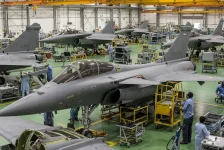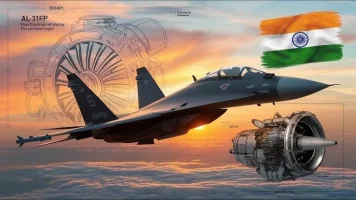- Views: 2K
- Replies: 14
The ambitious development of an indigenous jet engine for India's fighter aircraft continues to face significant hurdles, with new data revealing a persistent reliance on critical imported raw materials.
While domestic industry has shown remarkable progress, the goal of complete self-reliance in this strategic defence sector, a key objective of the Aatmanirbhar Bharat initiative, remains a challenge.
The Gas Turbine Research Establishment (GTRE), which is spearheading the Kaveri Engine Derivative (KDE) project, has a total raw material requirement of approximately 16,500 kilograms. A recent procurement list indicates that about a quarter of this, or 4,124 kilograms, must be sourced from foreign suppliers.
This dependency is most critical in the category of specialised superalloys, which are essential for components that must withstand the extreme temperatures and stresses inside a jet engine.
Specifically, the entire requirement of 1,650 kilograms of L-605 alloy, a cobalt-based superalloy valued for its high-temperature strength and corrosion resistance, is being imported. Additionally, 38 kilograms of specialised tubing for the engine are also sourced entirely from abroad.
This reliance on foreign materials exists despite major contributions from Hyderabad-based Mishra Dhatu Nigam Limited (MIDHANI), a key defence public sector undertaking.
MIDHANI is supplying over 13,300 kilograms of advanced materials for the project, including large quantities of aerospace-grade titanium and nickel-based alloys. This demonstrates India's growing capability in producing complex metallurgical products for the defence sector.
However, the inability to domestically produce niche materials like the L-605 alloy highlights a critical gap in the nation's manufacturing ecosystem. These imported materials not only increase the project's cost, estimated to be over Rs 10,000 crore, but also introduce a strategic vulnerability.
Global supply chain disruptions or geopolitical tensions could potentially delay or halt the project, which is vital for India's future air combat capabilities.
The KDE project is a successor to the original Kaveri engine program and is intended to power future unmanned and manned aircraft, including the Advanced Medium Combat Aircraft (AMCA).
The Defence Research and Development Organisation (DRDO) has partnered with French aerospace major Safran to overcome technical challenges and mature the engine design, which is aimed at producing a thrust of 81-95 kilonewtons (kN).
Defence experts note that until India develops the capability to manufacture these specific high-performance alloys, its ambition for a fully indigenous fighter jet engine will be constrained.
In response, GTRE is reportedly exploring long-term strategies, including technology transfer agreements and partnerships with private Indian companies, to establish domestic production lines for these critical materials.
The outcome of these efforts will be crucial in determining the timeline for achieving true self-reliance in aerospace engine technology.


